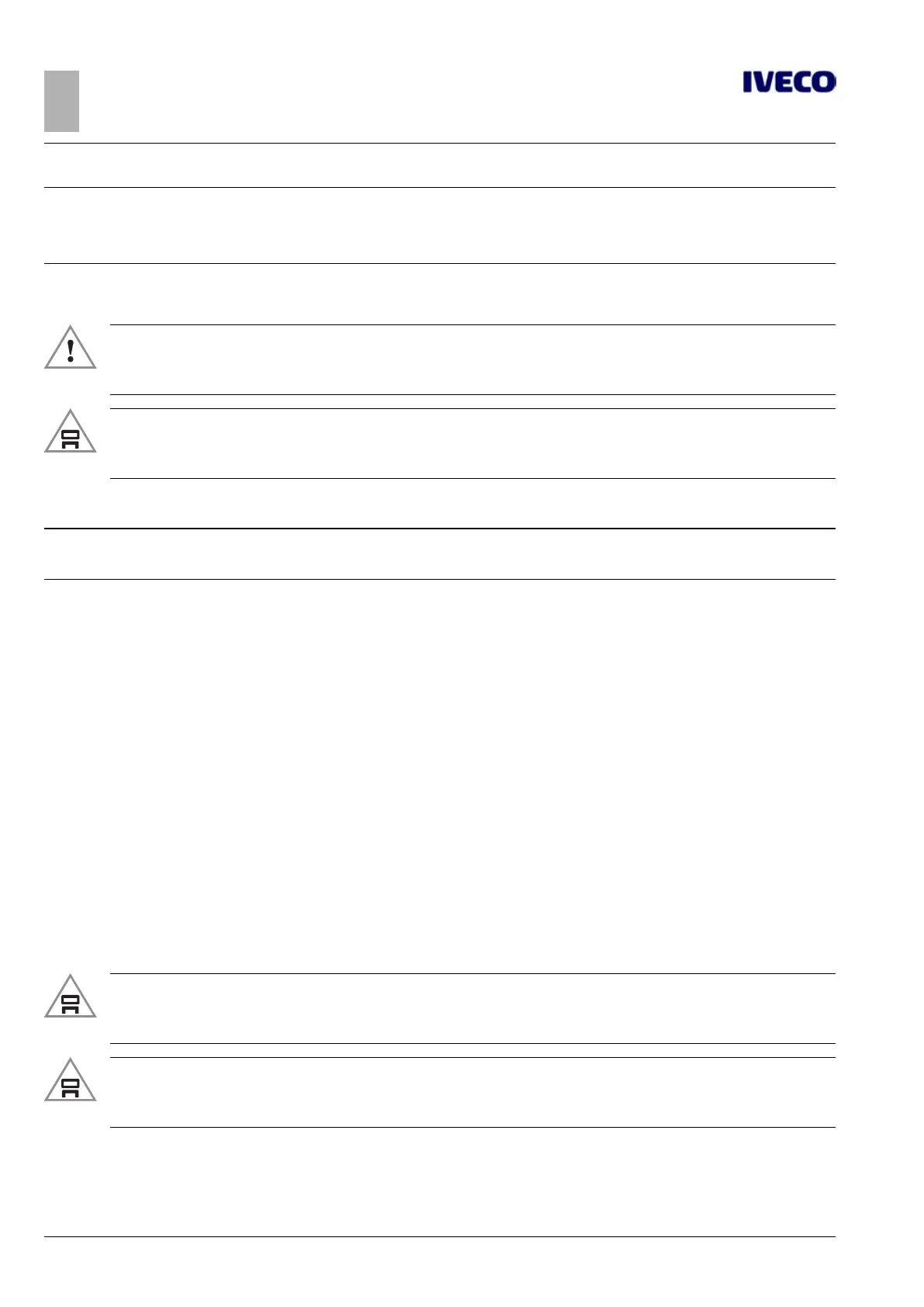18
DAILY 4x4 ‒ GUIDELINES FOR BODYBUILDERS
ELECTRONIC SUB-SYSTEMS
5.4 ELECTRICAL SYSTEM
– Printed 692.68.999 – 3 Ed. - Base 08-2020
Note
For more detailed information regarding the electrical system of the vehicle, refer to the Repair Manuals of DAILY 4x4 MY 2018,
print 692.68.970 (Euro VI) and print 692.68.980 (Euro III).
This manual is available at the Service Network and can also be obtained from Sales Agencies.
5.4.2 Precautionary measures when working on the system
▶ Electrical work (e.g. removing cables, adding circuits, replacing equipment or fuses, etc.), per-
formed in a manner inconsistent with the IVECO instructions or by unqualified personnel, can
cause serious damage to electronic control units and compromise driving safety.
▶ Any electrical work which does not comply with regulations may cause significant damage (e.g.
short circuits with the possibility of fire and destruction of the vehicle) and authorises IVECO to
annul the warranty.
Before removing any electrical/electronic equipment, disconnect the ground cable from the battery negative terminal.
Note
Whenever an electrical connection is opened, the two counterparts must be protected (for example, with sticky paper) to avoid
infiltration of water or dirt.
To prevent damage to the vehicle's electrical system, follow the instructions of the cable manufacturer.
● The cables must have suitable sectioning for the type of load and the position of the load in the vehicle.
● The power cables (+ direct) must be:
■ individually intubated in conduits (of suitable diameter) and not together with other different cables for signal and negat-
ive;
■ placed at least 100 mm (reference value = 150 mm) from high heat sources (turbine, engine, exhaust manifold, etc.);
■ placed at least 50 mm from containers of chemical agents (batteries, etc.);
■ placed at least 50 mm from moving parts.
● The path of the cables must be defined with brackets and clamps dedicated and reconciled, to avoid hanging parts and to be
able to restore the same installation after repairs or interventions.
● The passage of cables through holes and on the edges of metal sheets must be protected by cable gaskets in addition to the
corrugated tube.
It is not possible to specially drill the chassis to allow the cables path.
● The corrugated tubing must completely protect the entire cable and be connected (with heat shrinking or taping) to the rub-
ber caps on the terminals.
● All the positive terminals and cable terminals must be protected by rubber caps (air-tight in areas exposed to weathering or
with possible stagnation of water).
▶ Use only fuses with the features prescribed for the specific function. NEVER USE FUSES WITH
A CAPACITY HIGHER THAN THE PRESCRIBED. Replace using only keys and disconnected
users.
▶ When the operations have been completed, restore the original conditions of the wiring (paths,
protections, strips), making sure that the cables are not in contact with metallic surfaces which
could affect their integrity.

